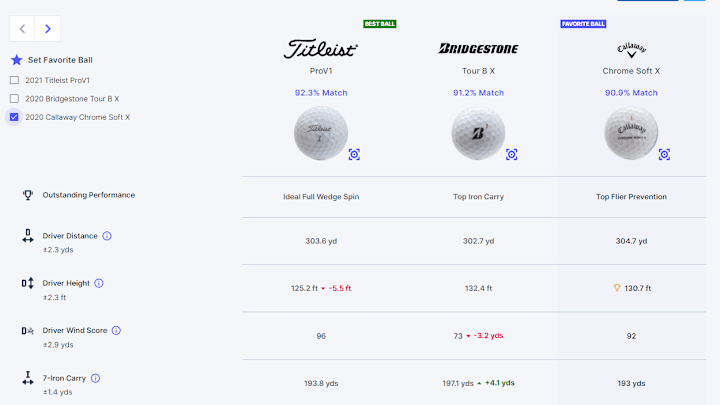What's The Right Ball for You? Ping Has an Answer

It’s one of the top equipment questions every player asks at one time or another: What’s the right ball for me?
Fitting someone to the right ball for his or her game has been more guesswork than science, more marketing than actual data. Ping believes it has advanced the ball a considerable ways down the field with Ballnamic, an interactive ball-fitting app that is designed to recommend the best ball choices based on each player’s ball flight characteristics.
Ping used its Ping Man swing robot and tested 40 balls in a number of driver, iron and wedge shots in dry and wet conditions. The data collected showed how balls perform across a wide range of lofts and speeds.
“It does not factor in traditional ball-selection criteria, such as construction and number of layers,“ said Marty Jertson, vice president of fitting and performance, who oversaw the creation and development of Ballnamic. “Instead, Ballnamic strictly focuses on tested performance characteristics, algorithmic equations and mathematical approximations.”
I took a spin, as it were, through Ballnamic for the sake of journalism, of course. The app resides at ballfitting.com and the profile asks for your handicap and ball preference, which, in this case, is the Titleist Pro V1. Curiously, it asks for your zip code and calculates the typical playing temperature and altitude. Mine came up 70 degrees, which has to be some kind of average because if you’ve just finished enduring a North Carolina summer, you’d be begging for 70 — at night.
The next page details your driver numbers. If you don’t have any specific numbers, you can approximate your total distance, launch angle (low, medium, high), typical driver spin rate (low, medium, high), your height preference and typical wind conditions.
I happen to have some TrackMan numbers from a Titleist TSi2 driver fitting almost two years ago. My ball speed was 144 mph, launch angle of 12 degrees and spin rate of 1,950. (The question will be asked what kind of balls were used in the fitting and I honestly don’t know. Sorry.) My height preference was medium-high and I used “occasionally” for wind conditions.
Next is 7-iron numbers and I said I carry mine 160 yards, It asks for your typical lauch angle (mine is high) and the typical spin rate. Initially I thought, I had high spin on my 7-iron but there’s an information button there and it said that if you have trouble in the wind, you probably have high spin rate. I don’t have that much trouble in the wind, so I chose “medium” spin. It asks for your stopping power preference and I listed “above average.” And under workability, I chose the middle ground. Then, it asks you if you play in wet conditions or experience fliers often and again, I chose the middle.
The following short page deals with wedges and I said I wanted high spin on full wedges. The choices for greenside spin were: “I don’t use spin around the green,” “I want a balance of height and spin” and “I want maximum greenside spin.” I chose the max.
The next page wants your putter feel preference and l listed “medium.” And the final choice was: “I want the best ball possible for my game,” and “I want the best matched ball for its price.”
The hook before you get your results is the window to pay for the service, which is $39.
My top matches were the Titleist Pro V1x (93.6% match), the Callaway Chrome Soft X (93.6%), the Snell Golf MTB-X (92.4%) and the Maxfli Tour X (92.3%). Interestingly, the Titleist Pro V1 was only an 85.1% match.
The app allows you to dig a little deeper into the data by comparing all the ball choices according to the information you entered for driver, 7-iron and wedge. You can also compare balls head-to-head for driver flight, driver flight into the wind and both flights for a 7-iron. And you can go back and change aspects of your profile and entry data which will produce different ball choices.
Until now, prevailing wisdom says that most tour-level balls are about the same with the driver and to choose the right ball, you should start around the green by chipping and pitching. Then work through the irons and test balls with the driver last.
Ballnamic is probably not designed to eliminate the eye and feel test on the course but by whittling the seemingly endless choices down to five, it’s a good start.

Purkey has been writing about all things golf for more than 30 years, working at the highest level at publications such as Golf Magazine and Global Golf Post. He is an avid golfer, with a handicap too low for his ability. Purkey lives in Charlotte, N.C.